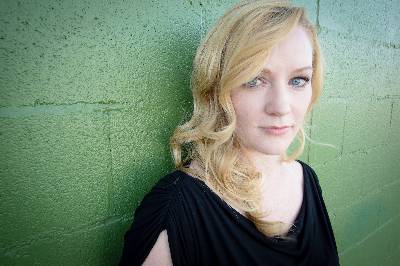
Sweet Charity is one of Bob Fosse's more well-known musicals, featuring numbers like “Big Spender,” “If My Friends Could See Me Now,” and the infamous “Rich Man's Frug” dance. It was written and created as a star vehicle for Gwen Verdon, Fosse's current wife (and muse) at the time of the show in 1966. Inspired by Federico Fellini's film, Nights of Cabiria, Sweet Charity explores the turbulent love life of Charity Hope Valentine, a hopelessly romantic but comically unfortunate dance hall hostess in New York City (Concord Theatricals). The original Broadway production of Sweet Charity, composed by Cy Coleman with lyrics by Dorothy Fields and book by Neil Simon, earned nine Tony Awards with Bob Fosse winning Best Choreography. The musical was adapted for the screen in 1969 with Shirley MacLaine as Charity, where Fosse made his feature-film directorial debut.
Sweet Charity opened during the dawn of the women's' liberation movement, six years after the birth control pill was approved. It explores the ideals of womanhood – single, independent gal versus wife and mother. Author, Stacy Wolf, puts it best:
Rather than directly celebrate or idealize women's sexual freedom, it first articulates but then gently ridicules the conservative perspective that would consign "good" women solely to virginity or motherhood; it presents sex work as labor and also portrays a loving, supportive community in that workplace; and it valorizes the bonding among women expressed in performance, as they sing and dance their way to an imaginary no-place, a utopia. That these feminist ideals are presented in the form of the musical ensures that the audience will be taken to that pleasurable no-place, too, as we tap our toes and hum along. (311-12).
When I began reading the script for Sweet Charity, many questions arose for me. While this musical is about women, what are we doing to show the female characters are powerful in this patriarchal society? How are we staying true to the original soul of the musical (mostly written and directed by white men) while respecting women (and the female characters in the show)? How might we use the MeToo Movement and the recent overturning of Roe v. Wade to emphasize the themes of this musical? How are these female bodies being seen, valued, exploited, and discarded in this show? In speaking with the cast, we had frank conversations about the experiences happening for women at that time. Individuals who worked as dance hall hostesses likely came to the big city to make it big, but reality forced them into jobs that made them rely on their bodies to make money. It wasn't glamorous – it was a reality. Autonomy over their bodies ceased to exist. To quote one of the dance hall hostesses, Helene, “We are trapped in the fly paper of life.” These jobs were hard to escape from, and it was important to talk about these harsh realities these characters faced with our cast.
The 1966 script has other issues to tackle like undertones of racism and misogyny. Again, we had candid conversations with the cast and production team about why the lines might have been written that way and how we might look at this text from a current, critical lens. Mounting a 2023 production of a musical written over 50 years ago comes with its own challenges, and we were thoughtful in our approach to address and update the context of the material from an informed place.
Another challenge I faced as the choreographer of this production was reimagining its iconic Fosse choreography. This has been a bucket list show for me as a choreographer for many years. I am well-versed in the “Rich Man's Frug” original choreography of fur coat walks with hips thrusted forward and soft-boiled egg hands gliding downward with gyrating neck isolations. It was a great challenge to me find my own choreographic voice within the musical. While we didn't copy any of the original material, there were Fosse and Verdon references everywhere for those familiar with their work. For me, it was exciting to explore this choreography through my own feminist perspective. It was important for me to make sure the cast felt empowered with their movement (regardless of their gender) and for them to have full autonomy of their bodies in space.
I was both excited and nervous to direct and choreograph the first show in the newly renovated Charles E. Maedgen, Jr. Theatre. This is the first ever musical directed by a member of the dance faculty, and I think this moment reflects the strong bonds we are building between the School of Theatre AND Dance. I have had great collaborators during this process – students, faculty, and staff—and deeply appreciate the work that theatre and design do within their own programs and how they are preparing their students post-graduation.
As the Head of Dance, I am also proud of the work our dance students have put into this production. Seeing our dance majors onstage with our theatre majors makes my heart smile, and I know this experience will shape their future pathways to find more collaboration between theatre and dance. This production team and cast were stellar, and I loved watching audiences react in such a positive way. It was a great honor to direct and choreograph this production.
Citations:
Wolf, Stacy. ""Something Better than This": Sweet Charity and the Feminist Utopia of Broadway Musicals." Modern Drama, vol. 47 no. 2, 2004,
p. 309-332. Project MUSE, doi:10.1353/mdr.2004.0040.
